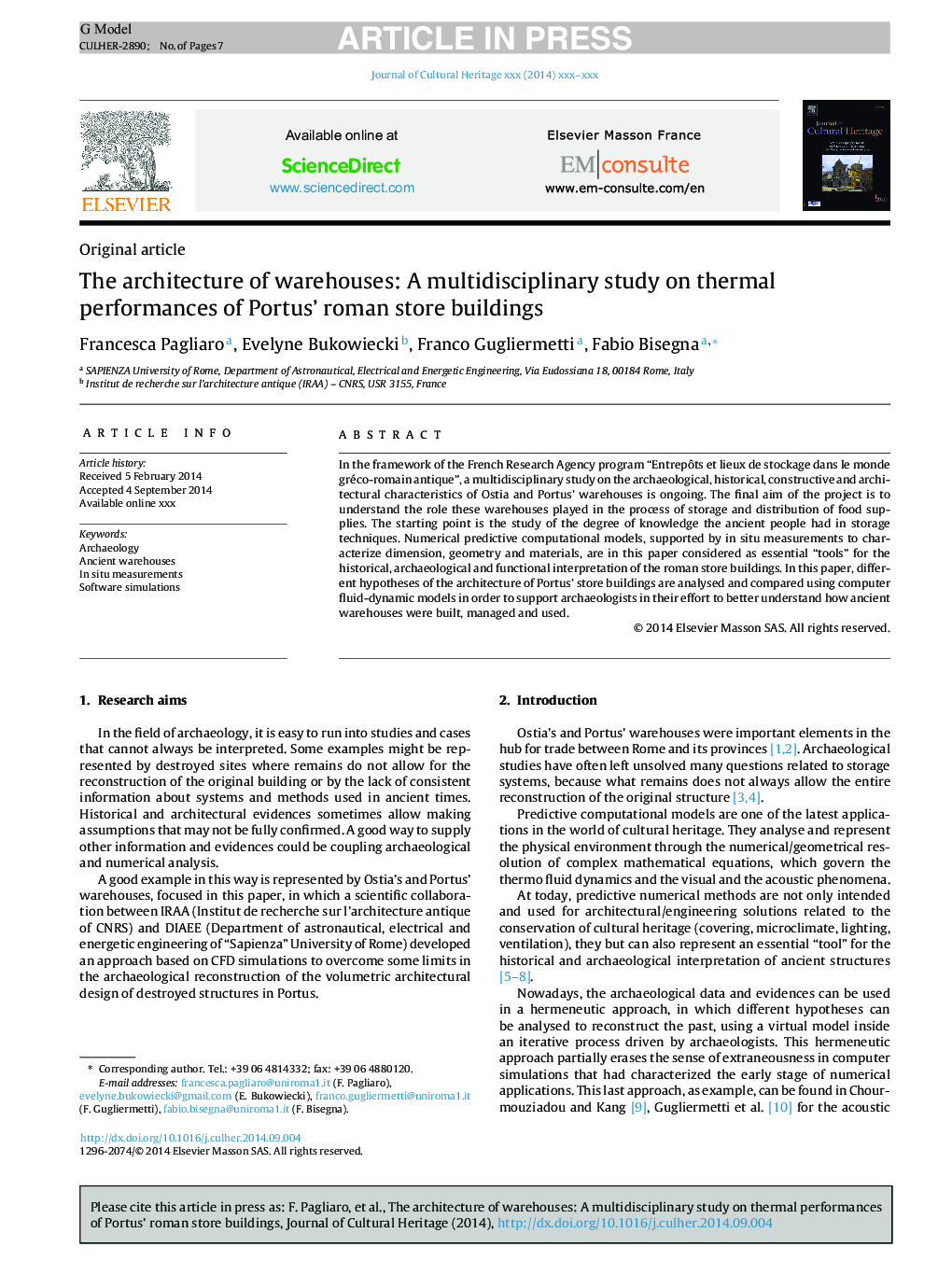| Article ID | Journal | Published Year | Pages | File Type |
|---|---|---|---|---|
| 10500008 | Journal of Cultural Heritage | 2015 | 7 Pages |
Abstract
In the framework of the French Research Agency program “Entrepôts et lieux de stockage dans le monde gréco-romain antique”, a multidisciplinary study on the archaeological, historical, constructive and architectural characteristics of Ostia and Portus' warehouses is ongoing. The final aim of the project is to understand the role these warehouses played in the process of storage and distribution of food supplies. The starting point is the study of the degree of knowledge the ancient people had in storage techniques. Numerical predictive computational models, supported by in situ measurements to characterize dimension, geometry and materials, are in this paper considered as essential “tools” for the historical, archaeological and functional interpretation of the roman store buildings. In this paper, different hypotheses of the architecture of Portus' store buildings are analysed and compared using computer fluid-dynamic models in order to support archaeologists in their effort to better understand how ancient warehouses were built, managed and used.
Keywords
Related Topics
Physical Sciences and Engineering
Chemistry
Physical and Theoretical Chemistry
Authors
Francesca Pagliaro, Evelyne Bukowiecki, Franco Gugliermetti, Fabio Bisegna,
